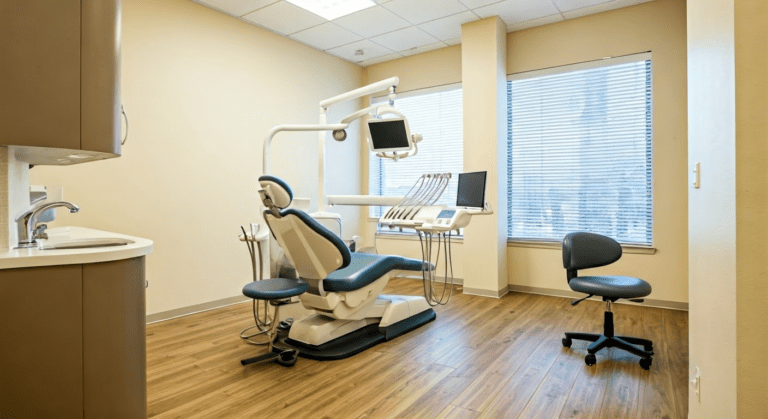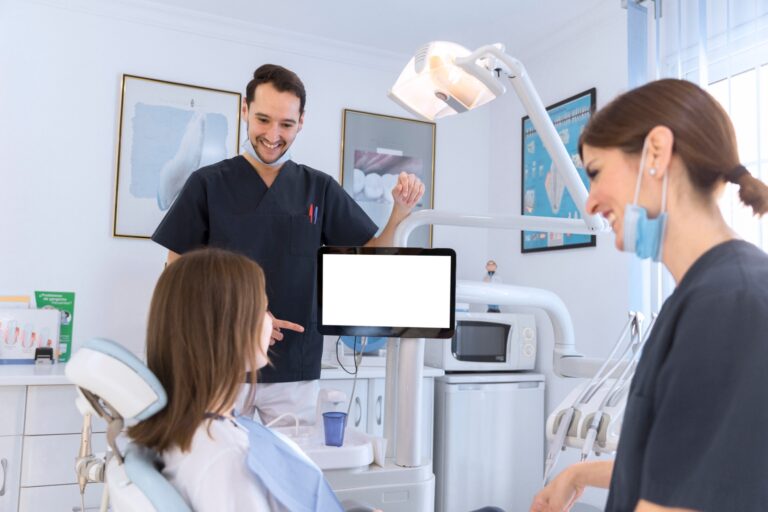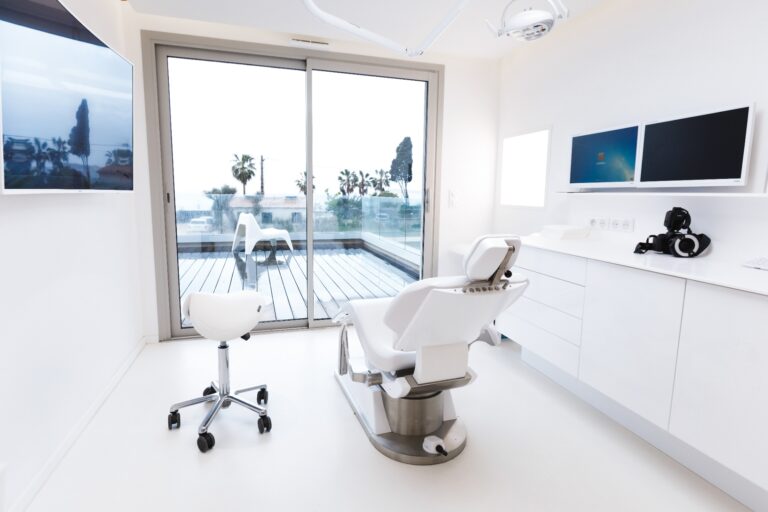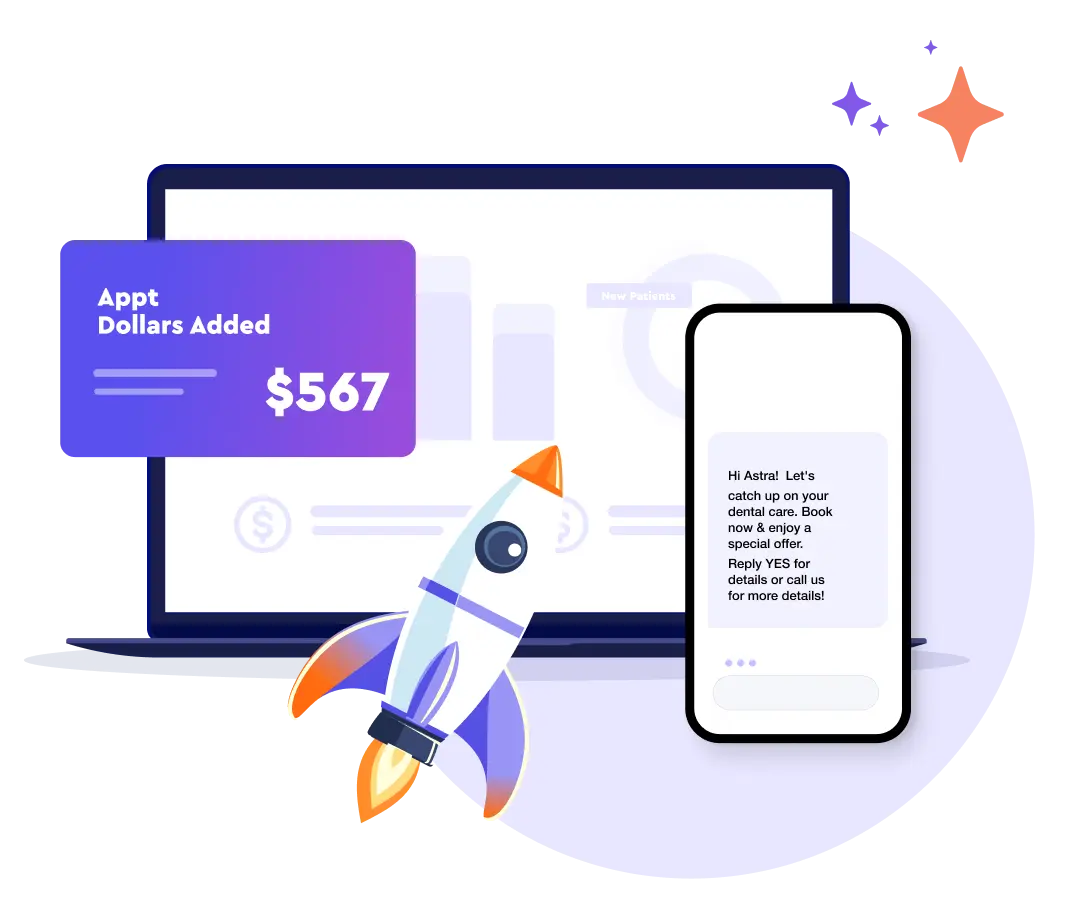10 Dental Recall Systems Strategies to Boost Retention
Missed appointments and patient no-shows can cost your dental practice more than just revenue—they disrupt schedules, impact patient care, and lead to long-term attrition. However, the problem isn't just forgetfulness; patients in the United States get busy, and without the right recall system in place, staying on top of their dental health takes a backseat.
This is where effective dental recall systems and strategies play a crucial role. From automated reminders to personalized follow-ups and strategic reactivation campaigns, a well-structured recall process keeps patients on track with their checkups—enhancing retention, improving care outcomes, and ensuring a consistently full schedule.
In this blog, we'll break down what makes a recall system effective, the best strategies for patient engagement, and a comparison of top recall solutions to help you choose the right fit for your practice. Plus, we'll tackle common questions dentists have about recall strategies to help you implement them successfully.
What Is Dental Recall Solutions?
Dental recall solutions are automated systems that keep patients engaged by scheduling and reminding them about regular check-ups. These systems use patient data and communication channels like calls, texts, and emails to ensure appointments aren't missed due to oversight or forgetfulness.
Beyond just reminders, recall solutions play a crucial role in preventive care and chronic condition management, helping patients stay on track with their oral health. By automating the process, dental practices reduce human error, improve retention, and maintain a steady flow of appointments—ensuring no patient slips through the cracks.
What Are the Different Types of Dental Recalls?
Dental recalls are generally categorized based on the nature and purpose of the recall. Let's explore some prevalent types:
- Routine Checkups: Regularly scheduled appointments intended for preventive care and health maintenance.
- Screening Recalls: These are recalls necessary for specific screenings like oral cancer screenings or periodontal screenings.
- Restorative Treatment Follow-ups: Patients needing treatments like fillings, crowns, or root canals may be scheduled for follow-up visits after the procedures.
- Orthodontic Treatment Follow-ups: Patients undergoing orthodontic procedures like braces or aligners usually need consistent check-ups for adjustments and monitoring progress.
- Post-Surgical Follow-ups: These checkups ensure comprehensive healing and avert any potential concerns following surgical procedures.
What Are the Advantages of Effective Dental Recall Solutions?
Effective dental recall solutions yield manifold advantages that streamline dental office operations and enhance patient satisfaction. Let's spotlight some significant benefits:
- Enhanced Patient Engagement and Satisfaction: Recall messages help nurture patient engagement. Proactively keeping patients informed catalyzes trust and imparts a sense of responsibility toward their oral health.
- Streamlined Office Operations: Automated recall solutions relieve the administrative burden of manually managing appointments, which propels operational efficiency and costs.
- Reduced Missed Appointments: Missed appointments can impact treatment plans and increase susceptibility to advancing oral health issues. Dental recall systems enforce timely visits and diminish the occurrence of missed appointments.
- Better Oral Health Outcomes: Regular checkups enabled by effective recall mechanisms lead to early detection and subsequent management of possible oral diseases, influencing better overall oral health outcomes among patients.
5 Mediums to Communicate with Patients for Dental Recalls

Effective patient recall appointments are about using the proper channels to match patient preferences. Some respond best to quick text messages, while others prefer phone calls or detailed emails. Even social media and in-person reminders can strengthen patient engagement. Let’s check out these five different mediums to communicate with patients.
1. Phone Calls: A Personal Touch for Higher Engagement
A personalized phone call can be a powerful recall tool for the best results. Calls add a human touch that other channels may lack, whether it is an automated reminder or a direct follow-up. Patients who prefer real-time interaction or need assistance booking appointments often respond better to phone calls. Training front desk staff to confirm and schedule visits over the phone can reduce cancellations and improve retention.
2. Text Messages: Quick and Effective Appointment Reminders
Text message reminder messages have high open rates and are a fast, non-intrusive way to remind patients about upcoming appointments. A simple message like "Your next cleaning is due. Reply to confirm or call to reschedule" makes it easy for patients to act. Automated text messaging reminders keep your recall system running smoothly without adding to your team's workload.
3. Emails: Strengthening Patient Retention Over Time
Emails are more than just appointment reminders—they help educate, engage, and build trust. Email reminders can enhance a well-planned email recall strategy, which can include:
- Appointment confirmations with easy scheduling links
- Preventive care tips tailored to the patient's needs
- Exclusive offers or incentives for on-time check-ups
- Success stories or updates from your practice
This approach keeps your practice relevant and encourages long-term patient commitment.
4. In-Person: Securing the Next Appointment Before They Leave
The best time to schedule a patient's next visit is before they leave the office. A simple "Let's book your next check-up now to keep you on track" can prevent missed appointments and last-minute cancellations. Encouraging patients to commit before they leave increases retention and keeps your schedule full.
5. Social Media: Engaging Patients Beyond the Office
Many patients spend time on social media daily, making it useful for recall reminders. Posting oral health tips, appointment reminders, and interactive content keeps your practice top-of-mind. Direct messaging provides a convenient way for patients to schedule their next visit without calling the office.
What Are the 9 Dental Recall Strategies to Implement for Growing Your Practice?
Keeping patients coming back isn’t just about great treatment—it’s about staying on their radar. A strong recall strategy ensures they don’t just visit once but make routine checkups a habit.
Here are nine proven dental recall strategies to help you grow your practice and keep your schedule full.
1. Personalized Communication: Making Patients Feel Valued
A one-size-fits-all approach does not work. Patients are more likely to respond when reminders feel personal and relevant. Instead of generic messages, tailor communication based on their treatment history, preferences, and past interactions.
Example:
"Hi [Patient's Name], Your routine cleaning is due! Since your last visit, we recommended a fluoride treatment—let's schedule your next appointment to keep your smile healthy."
Why it works: Personalization strengthens patient relationships and increases response rates.
2. Automated Appointment Reminders: Reducing No-Shows Effortlessly
Patients get busy and forget their appointments. Automated text, email, or call reminders keep them informed and encourage them to confirm their appointments as soon as possible, reducing missed visits.
Example:
"Reminder: Your dental appointment is on [Date] at [Time]. Reply 'C' to confirm or 'R' to reschedule. See you soon!"
Why it works: Automation ensures timely, consistent follow-ups without adding to your team's workload.
3. Flexible Scheduling Options: Making Appointments More Convenient
Patients are more likely to book and show up if they have scheduling flexibility. Offer:
- Extended hours (early mornings, evenings, weekends)
- Online booking for 24/7 accessibility
- Family scheduling to allow multiple appointments in one visit
Why it works: Giving patients control over their schedule reduces cancellations and increases compliance.
4. Incentivizing Patient Follow-Ups: Encouraging Commitment
A little motivation can boost follow-through. Small rewards make patients more likely to book and attend appointments.
Examples:
- Discounts on future treatments
- Free dental kits for regular check-ups
- Referral rewards for bringing in family or friends
Why it works: Incentives turn routine visits into rewarding experiences, increasing loyalty.
5. Segmenting Patients: Targeted Communication for Better Engagement
Not all patients need the same recall approach. Segment your patient base by:
- Regular check-ups (send soft reminders)
- Overdue appointments (more urgent, personalized follow-ups)
- Treatment-based recalls (specific reminders for procedures)
Example: A patient overdue for six months might receive:
"We have not seen you in a while! Keeping up with regular visits prevents costly dental issues. Let's schedule your next check-up soon."
Why it works: Targeted outreach increases recall success by addressing specific patient needs.
6. Recall Reminders During Office Visits: Locking in Future Appointments
The best time to schedule a patient's next visit is before they leave the office. Instead of relying on later reminders, train your staff to secure future appointments at checkout.
Example:
"Let's book your next cleaning now so you do not have to worry about it later. Do you prefer a morning or afternoon slot?"
Why it works: On-the-spot scheduling reduces forgetfulness and improves retention.
7. Tracking and Analyzing Recall Rates: Improving Strategies Over Time
A successful recall system needs constant monitoring. Track key metrics like:
- No-show rates
- Response rates to different recall methods
- The most effective communication channels
Why it works: Data-driven adjustments refine recall efforts and improve patient retention.
8. Engaging Patients on Social Media: Keeping Dental Care Top of Mind
Social media can serve as an indirect recall tool by keeping your practice in patients' daily lives. Post:
- Oral health tips and reminders
- Patient testimonials and success stories
- Fun, interactive polls about dental habits
Example:
"When was your last dental check-up? A) This month B) 3-6 months ago C) Over a year ago! Let us know in the comments."
Why it works: Casual engagement reminds patients of their dental health without feeling pushy.
9. Implementing a Well-Structured Recall System: Bringing It All Together
An effective recall system combines multiple strategies:
- Automated reminders for consistency
- Flexible scheduling for convenience
- Personalized communication for engagement
- Incentives for motivation
- Real-time tracking for improvement
Why it works: A structured, patient-first approach creates long-term loyalty, fewer missed appointments, and a thriving practice.
Top 5 Patient Recall Systems
Recall systems help reduce no-shows, improve retention, and enhance overall efficiency. Practice by Numbers, DocResponse, Solutionreach, Luma Health, and NexHealth streamline patient recall with automated reminders, real-time scheduling, and seamless communication.
1. Practice by Numbers

Practice by Numbers is an all-in-one dental analytics and patient engagement platform designed to help dental care practices optimize scheduling, automate recall, attract new patients, and improve patient retention. Leveraging real-time data and intelligent automation enhances workflow efficiency while ensuring seamless patient communication.
Key Features:
- Automated Patient Recall – Sends appointment reminders and follow-ups via text, email, and phone.
- Comprehensive Analytics – Tracks key performance metrics to optimize practice growth.
- Two-Way Patient Communication – Enables direct messaging for scheduling and follow-ups.
Pros:
- Reduces no-shows with automated reminders and confirmations.
- Provides actionable insights to enhance practice efficiency.
- Improves patient engagement through personalized outreach.
Do you want to discover how Practice by Numbers can transform your dental practice.? Book a demo today by calling us at 866-216-8416.
2. DocResponse

DocResponse is a powerful patient recall system designed to streamline communication and improve patient retention through effective communication strategies. Automating appointment reminders and personalizing outreach ensures timely follow-ups while reducing administrative burden. Its data-driven approach helps practices track recall performance and optimize engagement strategies.
Key Features:
- Automated Appointment Reminders – Sends customized SMS, email, and phone call reminders.
- Patient Segmentation – Categorizes patients based on recall needs for targeted outreach.
- Recall Rate Tracking & Analytics – Provides insights to refine follow-up strategies.
Pros:
- Improves patient engagement with personalized recall messages.
- Reduces missed appointments through automated reminders.
- Helps optimize recall strategies with real-time analytics.
Cons:
- Limited customization compared to larger platforms.
- It may require training for advanced features.
- Integration options may be restricted for certain EHRs.
3. Solutionreach

Since its founding in 2000, Solutionreach has been at the forefront of patient communication, evolving from a text messaging platform to a full-scale patient engagement solution. It streamlines interactions between healthcare providers and patients, ensuring better recall management and stronger relationships. Customizable tools help practices enhance efficiency and patient satisfaction.
Key Features:
- Automated Appointment Reminders – Sends timely notifications to reduce no-shows.
- Two-Way Messaging & Patient Surveys – Enables real-time communication and feedback collection.
- Customizable Patient Engagement Tools – Adapts to various healthcare needs, including dental and vision care.
Pros:
- Comprehensive engagement tools beyond just reminders.
- Strong integration capabilities for seamless workflow.
- Helps improve patient retention and satisfaction.
Cons:
- It can be expensive for smaller practices.
- Some users report a learning curve with advanced features.
- Occasional delays in message delivery.
4. Luma Health

Luma Health modernizes patient interaction by streamlining appointment recalls, reminders, and two-way communication. Its patient-first approach ensures seamless engagement, making it easier for patients to schedule, confirm, or reschedule visits. By automating outreach, Luma Health helps practices reduce no-shows and improve patient retention.
Key Features:
- Automated Recall & Reminders – Sends timely appointment reminders via SMS, email, and voice calls.
- Two-Way Patient Messaging – Enables direct communication for rescheduling and inquiries.
- EHR Integration – Syncs patient data and updates schedules automatically.
Pros:
- Improves patient engagement with real-time, two-way messaging.
- Reduces missed appointments with intelligent recall automation.
- Seamlessly integrates with existing EHR systems.
Cons:
- Initial setup may require time and training.
- Pricing can be a concern for smaller practices.
- Some users report occasional notification delays.
5. NexHealth

NexHealth simplifies patient recall by automating appointment reminders, confirmations, and follow-ups, ensuring fewer no-shows and higher retention. With seamless EHR integration, it updates patient schedules in real time, reducing administrative workload. This allows practices to focus on delivering quality care while NexHealth handles patient communication.
Key Features:
- Automated Reminders & Confirmations – Customizable sequences that sync with your EHR for real-time updates.
- Online Scheduling & Two-Way Messaging – Patients can book, reschedule, and communicate efficiently.
- Multi-Channel Outreach – Engages patients via SMS, email, and phone reminders.
Pros:
- Reduces no-shows with automated recall and confirmations.
- Enhances patient experience with seamless scheduling and communication.
- Saves staff time by syncing updates directly to your EHR.
Cons:
- Pricing may be high for small practices.
- Advanced features require proper setup and training.
- Limited customization compared to some competitors.
Conclusion
A well-structured dental office recall system ensures patients stay on top of their oral health while keeping their schedule full. It also makes life easier for the front office staff. By combining personalized communication, automated reminders, and multi-channel engagement, practices can minimize no-shows and encourage timely follow-ups. Tools like Practice by Numbers can easily automate the process, making patient outreach more efficient and effective.
Beyond just reminders, a strong recall strategy builds trust, loyalty, and long-term relationships, including relationship building. Patients who feel supported and valued are more likely to prioritize their dental care. By refining recall efforts, practices boost retention and create a seamless patient experience that drives growth and better health outcomes.




